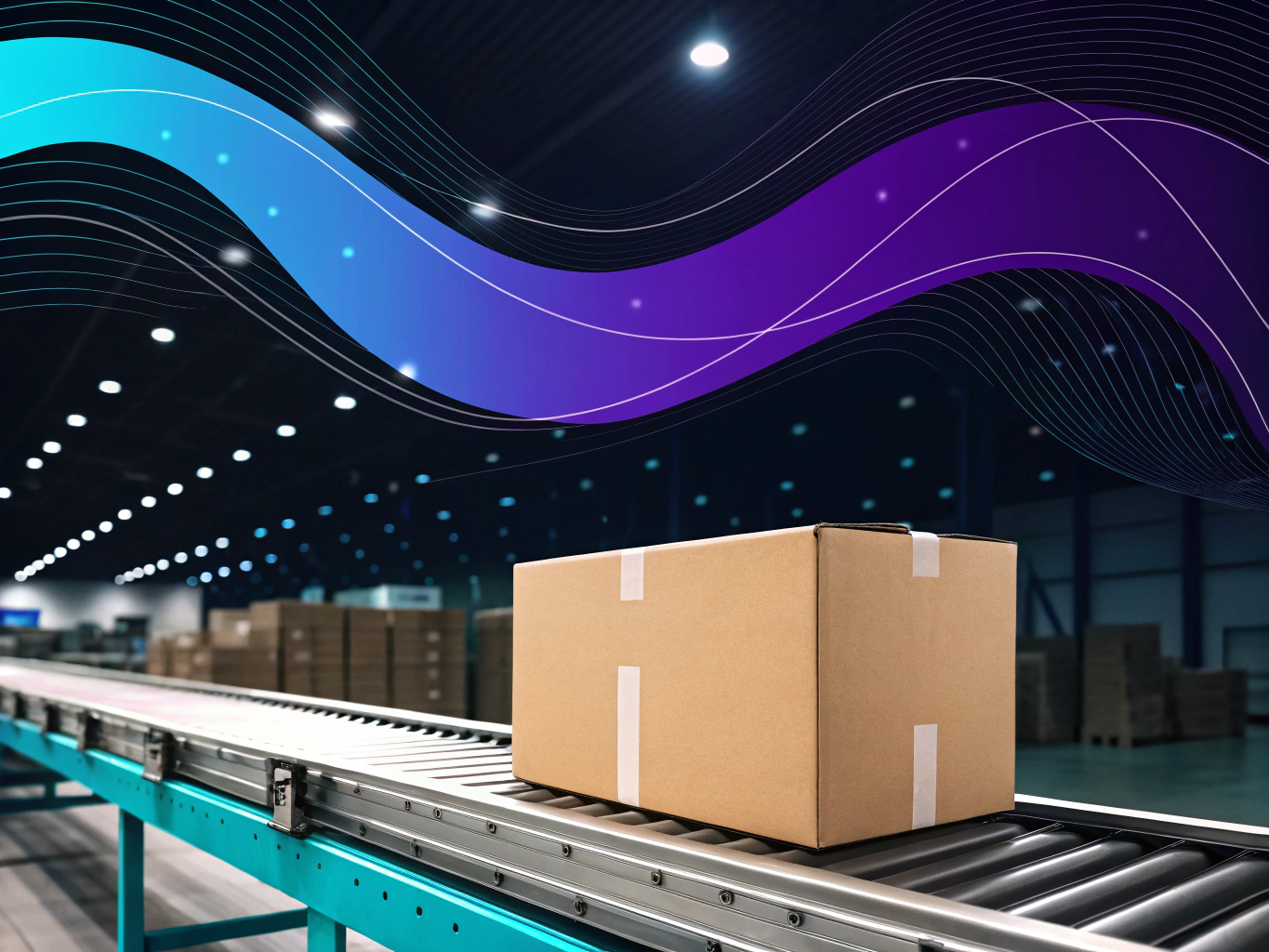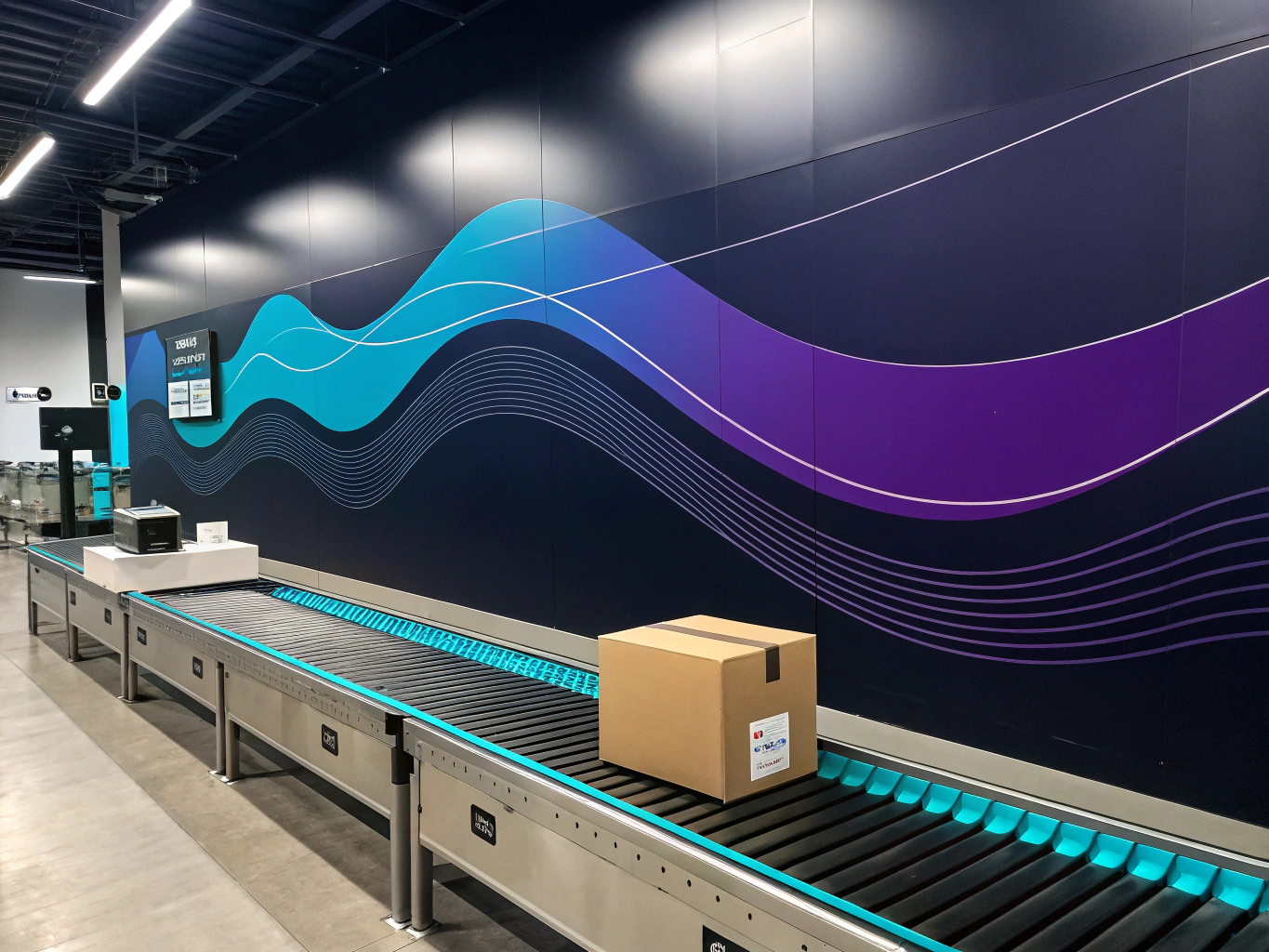The Hidden World of Amazon Prep Centers: More Than Just a Middleman
Let’s be honest – most Amazon sellers start their journey imagining they’ll be the next e-commerce success story, not spending countless hours hunched over boxes in their garage, applying FNSKU labels, and wrestling with packaging requirements. Yet here we are, watching countless entrepreneurs burn out before they even hit their stride.

The disconnect isn’t about lack of effort or potential – it’s about misunderstanding where to focus your energy in the Amazon ecosystem. While you’re busy playing tetris with inventory in your spare bedroom, your competitors are scaling their operations through amazon prep centers, treating them like their secret weapon for growth.
What Exactly is an Amazon Prep Center (And Why Should You Care)?

Think of an amazon prep center as your business’s backstage crew – the unsung heroes handling all the mundane but crucial tasks that keep your FBA operation running smoothly. They’re specialized facilities that take your inventory, prep it to Amazon’s exacting standards, and send it off to fulfillment centers while you focus on actually growing your business.
The Core Services That Make Prep Centers Worth Their Weight in Gold
Let’s break down what these centers actually do, because it’s way more than just slapping labels on boxes:
- Product inspection and quality control (catching issues before they become customer complaints)
- Professional packaging and bubble wrap wizardry
- FNSKU labeling (goodbye, printing headaches)
- Bundle creation and kitting (perfect for those sweet, sweet multi-product listings)
- Inventory management and tracking
- Direct shipping to Amazon fulfillment centers
The Real Cost of DIY vs Using an Amazon Prep Center
Here’s where things get interesting – and where most sellers get stuck in their decision-making. You’re probably thinking, “Sure, prep centers sound great, but what about those storage fees? I can do this myself and save money, right?”
Wrong. Dead wrong. Let me break this down with some real numbers that might surprise you:
The True Price of Going Solo
When you’re handling prep yourself, you’re not just paying with money – you’re paying with time, space, and opportunities lost. Consider this: the average seller spends 15-20 hours per week on prep work. That’s basically a part-time job you’re giving yourself on top of running your business.
Add in the costs of:
- Warehouse space (or that garage you could be renting out)
- Packaging materials (buying in smaller quantities = higher costs)
- Label printers and supplies
- Your own time (valued at what? $50/hour? More?)
Prep Center Pricing Reality Check
Most prep centers charge between $1-3 per item, depending on complexity. Some offer volume discounts that can bring this down significantly. When you factor in their professional-grade equipment, bulk material costs, and dedicated staff, the math starts looking pretty favorable.
But here’s the kicker – it’s not just about cost savings. It’s about what you could be doing with all that time you’re getting back. Sourcing new products? Building supplier relationships? Actually taking a vacation without your business grinding to a halt?
Finding Your Perfect Prep Center Match
Not all prep centers are created equal, and picking the wrong one can be worse than doing it yourself. The key is finding one with a solid track record and services that best suit your specific needs. Look for centers that understand your business model – whether you’re doing retail arbitrage, wholesale, or private label.
Red Flags That Should Send You Running
Watch out for these warning signs when vetting potential prep centers:
- No clear pricing structure (hidden fees are the worst)
- Poor communication (if they’re slow to respond now, imagine when they have your inventory)
- No system for tracking inventory (spreadsheets don’t count in 2024)
- Lack of Amazon FBA experience (you need experts, not beginners)
Core Services Every Amazon Prep Center Should Offer

Let’s be real – running an Amazon FBA business isn’t exactly a walk in the park. Between sourcing products, managing inventory, and dealing with Amazon’s ever-changing rules, it’s enough to make your head spin. This is where an amazon prep center comes in, acting like your business’s backstage crew, handling all the nitty-gritty prep work while you focus on growth.
Think of an amazon prep center as your business’s production line meets quality control department. They’re the ones making sure your products are ready for their grand entrance onto Amazon’s virtual shelves. But not all prep centers are created equal – some are like that one friend who says they’ll help you move but shows up three hours late with a hangover.
Essential Services That Make or Break a Prep Center
First up, let’s talk about product inspection. A good prep center doesn’t just glance at your items and call it a day. They’re getting up close and personal with every unit, checking for damages, verifying quantities, and making sure everything matches your specs. It’s time consuming, sure, but it beats dealing with angry customers and tanked reviews.
Then there’s the packaging game. Amazon’s got more packaging requirements than a spacecraft launch, and they’re not shy about rejecting shipments that don’t meet their standards. Your prep center should handle everything from poly bagging and bubble wrapping to bundle creation and proper box selection. And yes, they need to know the difference between suffocation warning requirements for different states – because that’s apparently a thing.
The Secret Sauce of Successful Amazon Prep Centers
Here’s where things get interesting. The best amazon prep centers aren’t just glorified packaging facilities – they’re logistics ninjas with a track record of keeping sellers sane. They’ve got systems in place for inventory management that would make Marie Kondo proud, and they’re using technology that goes beyond Excel spreadsheets (though let’s be honest, we all still love a good spreadsheet).
Inventory Management That Actually Works
Storage fees can eat into your profits faster than a kid in a candy store. A solid prep center helps you avoid this by managing your warehouse space efficiently. They should have real-time inventory tracking systems that tell you exactly what’s in stock, what’s being prepped, and what’s headed to Amazon’s fulfillment center.
Shipping and Compliance: The Make-or-Break Factor
Here’s something that’ll save you some headaches: good prep centers know Amazon’s shipping requirements like the back of their hand. They understand that mixing ASINs in boxes is about as welcome as a vegetarian at a BBQ competition. They handle everything from proper labeling to making sure your shipments best suit Amazon’s current receiving requirements.
Technology Integration: The Modern Prep Center Advantage
Let’s talk tech for a minute. The days of managing inventory with clipboards and paper forms are about as relevant as dial-up internet. Modern fba prep centers should be using sophisticated software that integrates with your seller central account, providing real-time updates and automated notifications.
But here’s the thing – it’s not just about having fancy software. It’s about how they use it to save time and reduce errors. The best centers have systems that can track individual items from the moment they arrive until they’re safely in Amazon’s hands. They’re using barcode scanners, automated label printers, and inventory management systems that talk to each other like old friends at a reunion.
Quality Control Systems That Actually Work
Quality control in an amazon prep center isn’t just about spotting obvious defects. It’s about having systematic processes that catch issues before they become problems. This means multiple checkpoints, clear documentation, and staff training that goes beyond “here’s how you tape a box.”
And let’s talk about something that often gets overlooked – returns processing. A good prep center should be able to handle returns from amazon fbm orders, inspect them, and either restock or dispose of them according to your instructions. It’s not the most glamorous part of the business, but it’s crucial for maintaining healthy inventory levels and customer satisfaction.
Communication and Reporting: More Than Just Updates

Here’s a truth bomb: the best prep center in the world is useless if you can’t communicate with them effectively. You need regular updates, clear reporting, and someone who actually responds when you have questions. And no, “We’ll get back to you within 5-7 business days” doesn’t cut it in the fast-paced world of Amazon selling.
Look for centers that provide detailed reports on inventory levels, processing times, and any issues they encounter. They should be proactive about alerting you to potential problems and have clear processes for handling urgent situations. Because let’s face it – in the Amazon world, everything feels urgent.
Technology Integration: The Future of Amazon Prep Centers
Let’s be honest – most Amazon prep centers today operate like it’s 2010. They’re pushing paper forms around, manually checking boxes, and relying on spreadsheets that would make your high school computer teacher cringe. But here’s where things get interesting: the prep centers that are thriving are the ones embracing automation and AI.
The Tech Revolution in Warehouse Space
Think of your prep center like a mini fulfillment center on steroids. The best ones are implementing warehouse management systems (WMS) that do more than just track inventory – they’re predicting demand patterns, optimizing storage space, and even suggesting the most efficient picking routes. It’s like having a really smart intern who never needs coffee breaks.
But it’s not just about fancy software. The real game-changers are the prep centers investing in automated labeling systems, smart conveyor belts, and AI-powered quality control. These tools don’t just save time – they’re practically eliminating human error in the most time consuming tasks.
Choosing Your Perfect Amazon Prep Center Match
Here’s where your inner detective needs to come out. The best suit for your business isn’t necessarily the biggest name or the cheapest option. It’s about finding a prep center that aligns with your specific needs and growth trajectory.
What to Look For (Beyond the Basics)
- Track record with similar products in your category
- Transparent storage fees and pricing structure
- Integration capabilities with your existing systems
- Ability to handle both Amazon FBA and Amazon FBM orders
I’ve seen too many sellers get burned by choosing prep centers based solely on price. Remember: if a prep center’s rates seem too good to be true, they probably are. You might save a few bucks per unit, but what’s the real cost when your products arrive at Amazon’s warehouse labeled incorrectly?
The Future of FBA Prep Services

The prep center landscape is evolving faster than Marvel’s multiverse. We’re seeing the emergence of “smart” prep centers that leverage AI for everything from inventory forecasting to quality control. These aren’t your grandfather’s warehouses – they’re sophisticated operations that can predict and prevent issues before they happen.
Emerging Trends in FBA Prep
The most exciting developments I’m seeing in the fba prep space are centered around automation and data analytics. Imagine a prep center that can automatically adjust its processing capacity based on your sales velocity, or one that uses computer vision to spot defects human eyes might miss.
Some forward-thinking prep centers are even experimenting with robotics for routine tasks. While we’re not quite at the “robots running the warehouse” stage (thank goodness – I’ve seen enough sci-fi movies to know how that ends), the integration of automation is making operations more efficient and reliable.
Making the Final Decision
Choosing the right prep center isn’t just about checking boxes on a feature list – it’s about finding a partner who can grow with your business. Here’s my tried-and-true framework for making the final call:
The Decision Matrix
- Calculate your true costs (including hidden fees and potential savings)
- Evaluate their technology stack and integration capabilities
- Consider their location relative to your suppliers and Amazon’s warehouses
- Review their communication protocols and support systems
For those wondering how to become an Amazon prep center themselves – it’s not just about renting warehouse space and hiring staff. The successful ones I’ve seen start with a solid understanding of both the technical and operational aspects of FBA prep.
Final Thoughts: The Road Ahead
The world of Amazon prep centers is at a fascinating crossroads. On one side, we have the traditional operators who’ve been doing this since the early days of FBA. On the other, we’re seeing tech-savvy newcomers who are reimagining what a prep center can be.
Whether you’re using a prep center or thinking about starting one, remember this: the future belongs to those who can blend the fundamental principles of good inventory management with the possibilities of modern technology. It’s not about replacing humans with machines – it’s about using technology to make humans more effective.
The key is finding (or building) a prep center that understands this balance. One that knows when to leverage automation and when to rely on human expertise. Because at the end of the day, success in the Amazon ecosystem isn’t just about moving products – it’s about moving them intelligently.
👉👉 Create Photos, Videos & Optimized Content in minutes 👈👈
Related Articles:
- Guide to Walmart Creator: Everything You Need to Know
- Amazon Print on Demand: A Beginner’s Guide to Success
- Amazon Merch on Demand: A Beginner’s Guide to Success
Frequently Asked Questions
how to become an amazon prep center
To become an Amazon prep center, you need to establish a business that specializes in preparing products for fulfillment by Amazon (FBA). This involves setting up a warehouse with the necessary equipment and staff to handle receiving, inspecting, labeling, repackaging, and shipping products according to Amazon’s guidelines. You’ll also need to build relationships with Amazon sellers who require prep services and ensure compliance with Amazon’s strict standards to maintain efficiency and accuracy.
how to start an amazon prep center
Starting an Amazon prep center involves several key steps, including researching and understanding Amazon’s FBA requirements, securing a suitable location with adequate space for processing and storing inventory, and investing in the necessary equipment such as labeling machines and packaging materials. You’ll also need to develop a pricing structure for your services, create a marketing plan to attract clients, and hire skilled staff to manage the operations effectively. Additionally, it’s important to register your business and ensure you comply with all local and industry regulations.
what is prep center in amazon
A prep center in Amazon refers to a third-party service provider that assists Amazon sellers by preparing their products for fulfillment by Amazon (FBA). These centers handle tasks such as inspection, labeling, packaging, and shipping, ensuring that products meet Amazon’s requirements for processing and storage. This service is especially beneficial for sellers who lack the time, resources, or expertise to manage these tasks themselves.
what is an amazon prep center
An Amazon prep center is a business that specializes in preparing and processing inventory for sellers who use Amazon’s FBA program. These centers take care of various tasks such as product inspection, labeling, packaging, and shipment to Amazon fulfillment centers, ensuring compliance with Amazon’s standards. By outsourcing these activities, sellers can focus on other aspects of their business while ensuring their products are FBA-ready.
what is amazon prep center
Amazon prep centers are third-party facilities that provide preparation services for sellers participating in Amazon’s FBA program. They offer a range of services including product inspection, labeling, bundling, and repackaging to ensure inventory meets Amazon’s strict guidelines for storage and shipping. These centers help streamline the fulfillment process for sellers, allowing them to efficiently manage their inventory without handling the physical preparation tasks themselves.
About the Author
Vijay Jacob is the founder and chief contributing writer for ProductScope AI focused on storytelling in AI and tech. You can follow him on X and LinkedIn, and ProductScope AI on X and on LinkedIn.
We’re also building a powerful AI Studio for Brands & Creators to sell smarter and faster with AI. With PS Studio you can generate AI Images, AI Videos, Chat and Automate repeat writing with AI Agents that can produce content in your voice and tone all in one place. If you sell on Amazon you can even optimize your Amazon Product Listings or get unique customer insights with PS Optimize.
🎁 Limited time Bonus: I put together an exclusive welcome gift called the “Formula,” which includes all of my free checklists (from SEO to Image Design to content creation at scale), including the top AI agents, and ways to scale your brand & content strategy today. Sign up free to get 200 PS Studio credits on us, and as a bonus, you will receive the “formula” via email as a thank you for your time.
